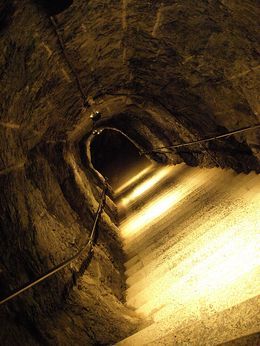History of Tunnels
Some 3000 years ago, when our ancestors started discovering techniques of building stable and strong bridges, they also discovered new way of connecting two points of land - tunnels! This discovery was initially used not for transport of goods and people across harsh terrains, but for defensive purposes in the vicinities of important military or royal posts (tunnels below castles). Babylonian and Persian architects were the first who saw the potential of large underground networks of tunnels called quant or kareez. These irrigation tunnels were used to transport water underground trough deserts, enabling life in some of the most hostile lands on planet earth (Iranian city of Gonabad still have a working network of kareez tunnels that is 2700 year old). In Babylonia, royal families enjoyed fresh water from Euphrates that was delivered to them through incredibly built 900m long tunnel that was lined with bricks.
Greeks and roman took all the knowledge of Babylon and Ancient Egypt, and improved it 10fold. With tunnels they were able to transforms marches, transport water through mountains, and create pedestrian tunnels trough very harsh terrains. To this day historians wonder how much workforce was involved in the construction tunnel between Naples and Pozzuoli that was created around 36 BC. This incredible structure was 4800 foot long, 25 foot wide and 30 foot high, and it even had ventilation shafts. Less than 100 years later in 41 AD, Romans used around 30,000 workers to build even larger tunnel that was 5.6 km long. After 11 years of work, tunnel finally enabled drainage of the Fucine Lake, which shrunk from its original size of 140 km² to 57 km². Later in 19th century, Italian prince Alessandro Torlonia commissioned complete drainage of that lake, which was done by the efforts of the Swiss engineer Franz Mayor de Montricher who created new tunnel after 13 years of work. Land that was reclaimed from that lake represents one of the most fertile stretches of land in the entire Italy.

In European Middle Ages, tunnels were almost exclusively used for mining or for military. After public transportation finally started to grow under the influence of Renaissance and trading with distant lands. Hundreds of smaller tunnels were created between mid-1600s and 19th century, but by then new driving force of tunnel construction came – railroads. This new form of transport soon enabled spreading of tunnels across entire world.

